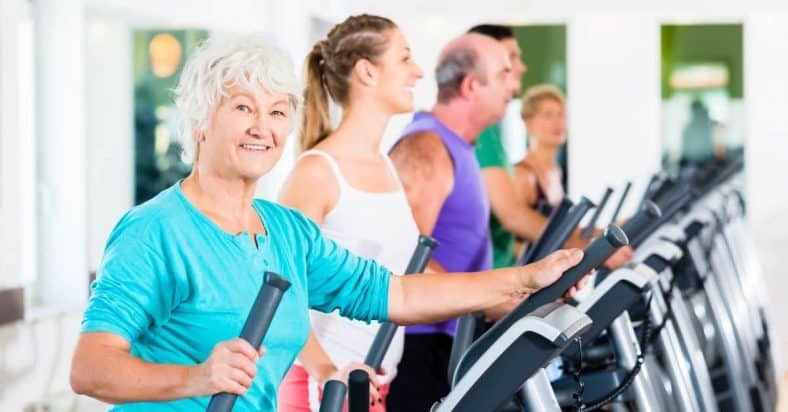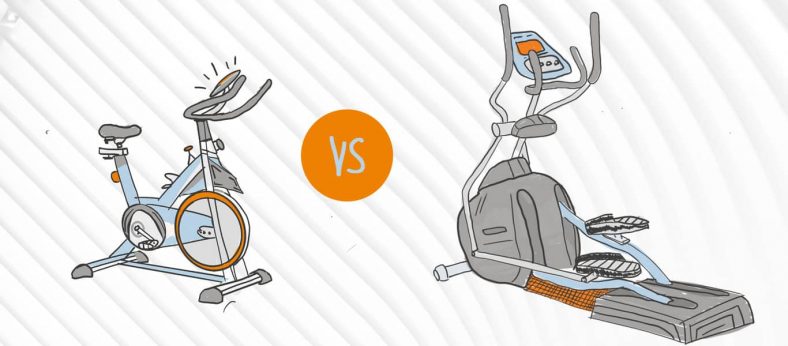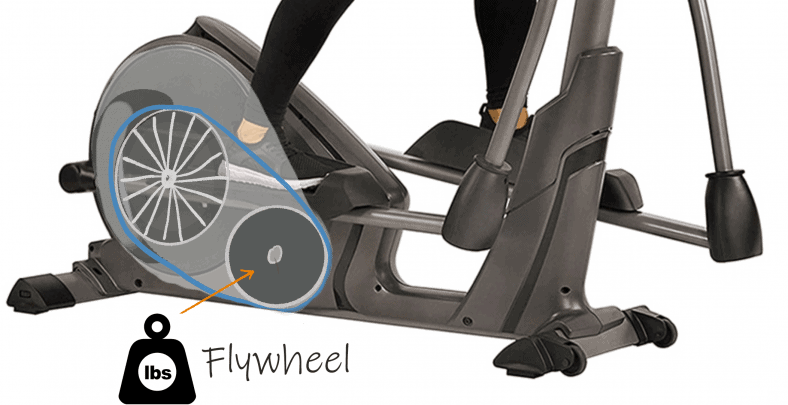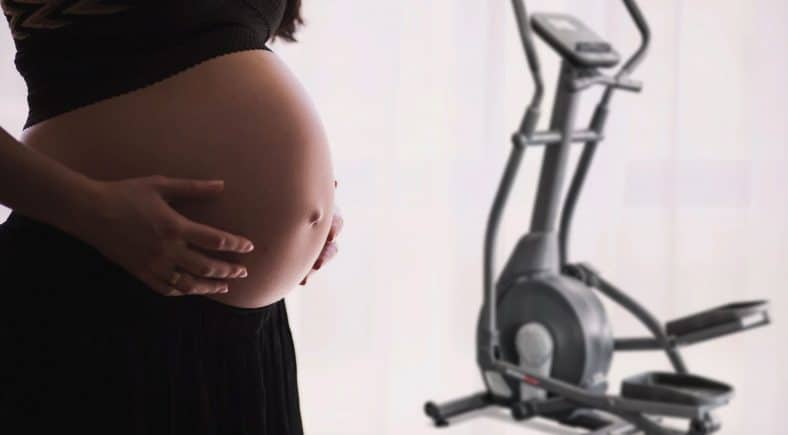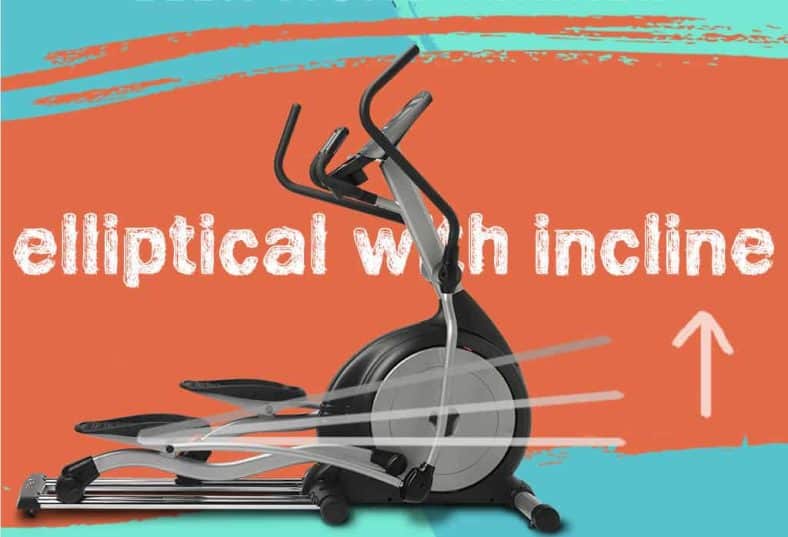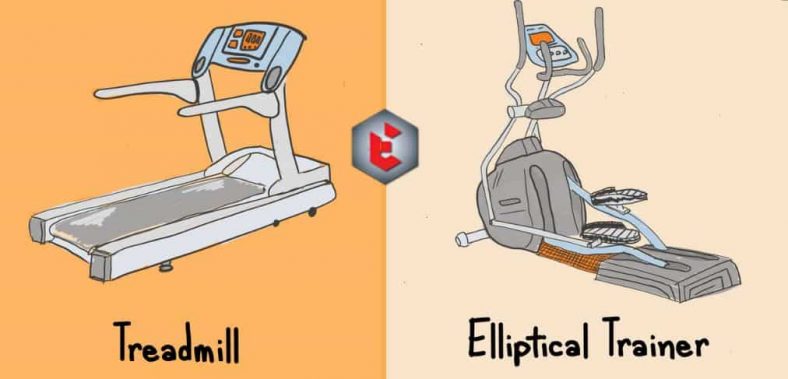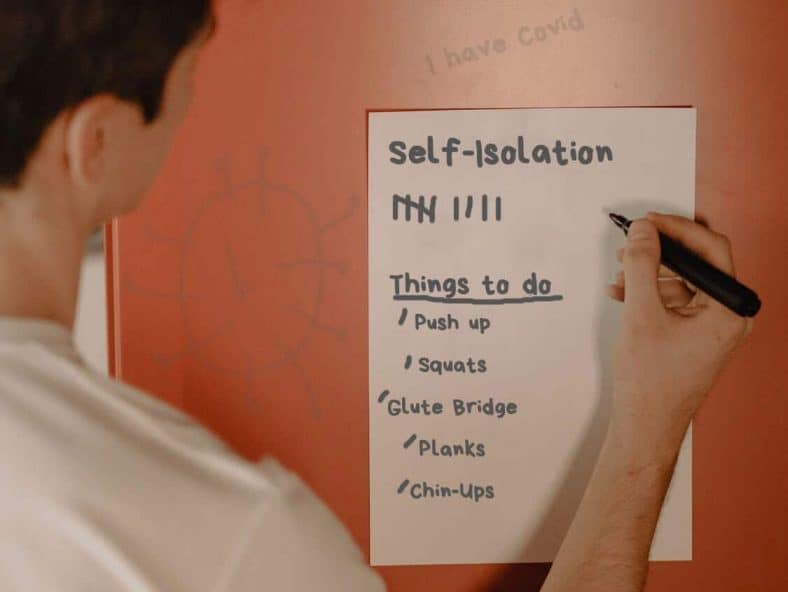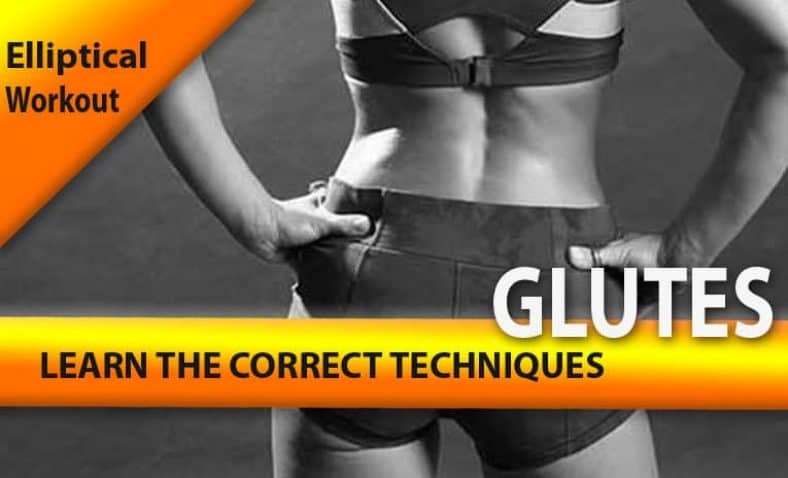Many seniors cannot jog or walk outside every day because of knee problems. In this case, an elliptical machine can help the seniors to maintain muscle movement, bone density, and mobility by mimicking the movement of walking. If you are planning to buy an elliptical for an elderly person then it is recommended that you research to find the best ellipticals for seniors.
The Sunny Health & Fitness SF-E905 Elliptical Machine Cross Trainer is the best elliptical for seniors. It has 8 level magnetic resistances with a pulse monitor. You can train both lower and upper body muscles without putting any pressure on your joints.
Now, what’s best for one is not best for all. So, in this article, I will give detailed reviews of the best elliptical machines in the market for seniors. All of these machines have their unique qualities and features. So, it is best that you learn about their features, pros and cons before making up your mind.
Before we go into details, you can look into this table to get a brief idea about all the elliptical machines reviewed in this article.
| Elliptical Machine | Type | Dimension (Inches) | Product Weight | Resistance | Links |
|---|---|---|---|---|---|
| Sunny Health & Fitness SF-E905 Elliptical Machine Cross Trainer | Standing | 28 L x 17 W x 57 H | 68 pounds | 8 | Check Price on Amazon |
| Sunny Health & Fitness Magnetic Mini Exercise Bike | Under Desk | 20.5 L x 16.5 W x 10.5 H | 19.1 Pounds | 8 | Check Price on Amazon |
| Stamina 55-1602 Inmotion Elliptical | Under Desk | 24.5 L x 17 W x 11.5 H | 24 Pounds | 8 | Check Price on Amazon |
| Teeter LT 3 FreeStep Recumbent Elliptical Cross Trainer | Seated | 54.0 L x 38.0 W x 52.5 H | 110.2 pounds | 13 | Check Price on Amazon |
| Bowflex M3 Max Trainer | Standing | 46.5 L x 22.5 W x 26.5 H | 152 pounds | 8 | Check Price on Amazon |
| Cubii JR1 Under Desk Elliptical Machine | Under Desk | 23.15 L x 17.56 W x 10 H | 27 pounds | 8 | Check Price on Amazon |
| SCHWINN 470 Elliptical Machine | Standing | 70.00 L x 28.00W x 71.00 H | 168.70 pounds | 25 | Check Price on Amazon |
Top 7 Ellipticals for Seniors
All of these elliptical machines mentioned in this list have their special features, and they all give outstanding performance. These machines emerged as the best among hundreds of similar elliptical machines. However, you should know about the specifics of the top ellipticals to understand which one is suitable for you within your budget.
So, here are the Elliptical Machines most suitable for elderly people:
1. Sunny Health & Fitness SF-E905 Elliptical Machine Cross Trainer
Let us start with the most popular one. Sunny Health & Fitness SF-E905 Elliptical Machine Cross Trainer is the ultimate elliptical machine for seniors. It has adjustable and powerful 8 levels of magnetic resistance, which helps to burn calories more easily and faster. Thus, seniors can have low-impact exercise without affecting the joints.
It is the best for the seniors because it has pulse sensors to monitor the heart rate. There is also a digital monitor to see the time, distance, and speed covered in workouts. As a result, users can adjust the workout according to their needs.
The machine is compact and thus does not occupy too much space. Moreover, it is safe for the seniors as they can lock the handles and footpads with anti-slips. Hence, there is no chance of injury for the seniors.
Specifications:
- Brand Name: Sunny Health & Fitness
- Type: Standing
- Material: Steel Frame
- Product Dimensions (inches): 28 L x 17 W x 57 H
- Product Weight: 68 Pounds
- Color: Multicolor
- Resistance Levels: 8 level
- Maximum Carrying Weight: 220 Pounds
- Programs: None
Features
Compact: The size of the elliptical machine is very convenient for people who have a very small space. It is not too heavy. So, you can put it in any corner of your house.
Pulse Sensor: This is one of the most useful features of the machine. Seniors can observe their heart rate while working out.
Digital Monitor: there is a small display attached to the machine, and it keeps track of the time, speed, and distance you cover using the machine. It also shows how much calories are burnt.
Anti-Slips and Stabilizer: This elliptical machine is the safest elliptical machine for a senior person. The anti-slip locks and stabilizers attached to the machine secure it in a space so that seniors do not face any accidents.
Pros:
- Provides smooth exercise for the upper and lower body.
- Compact
- Attached pulse sensor
- digital monitor
- Stabilizers
- Anti-slip locks
- Micro-controller to adjust the resistance
Cons:
- Not durable
- Needs to be assembled
- Can make noise
2. Sunny Health & Fitness Magnetic Mini Exercise Bike
The Sunny Health & Fitness Magnetic Mini Exercise Bike is among the best elliptical machines right now. This lightweight portable machine is suitable for seniors who are not comfortable working outstanding on other machines. Seniors can sit down and exercise while enjoying watching the television.
Interestingly, you can have a 7-inch stride even when you are sitting. The elders often suffer from joint pains, especially knee pain. The machine has a low impact and does not put any pressure on the knee joints. The level 8 magnetic resistance keeps the exercise challenging and helps to lose weight.
Seniors can also use the machine to work out upper body parts by putting the machine on a desk or bench. As this elliptical machine is only 19.1 pounds, it is also easily carried to places.
Specifications:
- Brand Name: Sunny Health & Fitness
- Type: Under desk
- Material: Steel
- Product Dimensions (inches): 20.5 L x 16.5 W x 10.5 H
- Product Weight: 19.1 Pounds
- Color: Gray
- Resistance Levels: 8
- Maximum Carrying Weight: 220 Pounds
- Programs: None.
Features:
2 in 1 Design: Usedfor both lower and upper body exercise. Thus, it improves muscles and bone density of the body. The machine reduces stress level as well
Simple Operation: The integrated 3.52-pound flywheel makes it easy to take each stride smoothly without much pressure. Thus, the bone joints are not pressured.
Digital Display: The battery-powered digital monitor shows the amount of time and distance spent on the machine and the calories burned on the machine.
Portable: The machine is compact and not so heavy. There is a handle to carry it. You can move it around or home or take it outside. So, it is also easy for the seniors to move it around.
Pros:
- Dual Function (lower and upper body)
- Compact
- Portable
- Budget-friendly
- Digital Display
Cons:
- Not durable (only one year warranty)
- Starts making noises after 3 to 4 months.
3. Stamina 55-1602 Inmotion Elliptical
The Stamina 55-1602 Inmotion Elliptical is noiseless, compact, and lightweight. It is a small under-desk elliptical machine that can be used both sitting and standing. Besides, the seniors can change their positions like paddle forward or backward and train different muscles.
Seniors who do not like irritating sounds coming from their machines will adore this quite elliptical. They can sit down and work out on this machine while doing any activities like watching television, playing video games, or chess. The seniors will not be bothered with needless sounds and get a good leg workout.
The resistance level of the machine can be changed based on the user’s preference. They can see their progress on the monitor. Unfortunately, there is no option of monitoring heart rate.
Specifications:
- Brand Name: Stamina
- Type: Under desk
- Material: Metal
- Product Dimensions (inches): 24.5 L x 17 W x 11.5 H
- Product Weight: 24 Pounds
- Color: Multiple colors
- Resistance Levels: 8
- Maximum Carrying Weight: 250 Pounds
- Programs: None
Features
Adjustable Tension: Users can change the level of resistance within 8 levels. If you want to lower the tension or turn it up. Use the knob on the machine.
Display: The Stamina 55-1602 Inmotion Elliptical has an LCD monitor. The monitor shows the time, speed and distance. It means seniors can easily see their exercise progress.
Movement Options: Users can move their legs backward and forwards depending on their choice. This way they can tone their leg muscle from different positions.
Color Choice: The machine comes in three colors that are green, orange, and silver. The seniors will love to choose their own color when they buy the machine.
Portable: This elliptical is very light and easy to carry. It takes very limited space in your house. So, you do not have to make extra space for the machine in your house.
Pros:
- Comes with rechargeable batteries
- Multicolor options
- Lightweight and comparably small in size
- Changeable resistance
Cons:
- Not so durable
- Not used for arm workout
- No option for monitoring heart rate
4. Teeter Free Step Recumbent Cross Trainer and Elliptical
It is a perfect machine for a full-body workout without any pressure on the joints. Hence, this low-impact elliptical is a wise choice for elderly people. Seniors who have problems standing will find this machine supportive as it comes with a seat.
The machine gives a soft sound while you are working out. It gives full-body coverage. Both the upper and lower muscles are engaged in exercise. Therefore it gets easy to burn calories. The free resistance dial on the machine is used for adjusting the tension. It makes the strides comfortable and has zero impact on the bone joints.
The machine is heavy, but there are wheels to carry it to different places in their home. The machine is sturdy hence very steady during workouts. Similar to other elliptical machines, it also has a display to read the information. However, it comes with the extra feature of a device stand and water bottle holder.
Specifications:
- Brand Name: Teeter
- Type: Seated
- Material: Metal
- Product Dimensions (inches): 54.0 L x 38.0 W x 52.5 H
- Product Weight: 110.2 Pounds
- Color: Black
- Resistance Levels: 13
- Maximum Carrying Weight: 300 Pounds
- Programs: None
Features
Device and Water Bottle Holder: A great feature for seniors. They can put their phones or tabs on the stand and keep water nearby.
Simple Display: A simple but easy-to-read LCD monitor is attached to the machine. The information displayed in the monitor is easy to read and understand for the elders.
Great Design: The elliptical has a robust design with ample space and supports to sit down and rest feet on the pedals. It helps to take long strides without any problem such as slipping of the seat or pedals.
Pros:
- No impact on body joints
- Quick calorie burning
- Almost noiseless activities
- Adjustable and comfortable seat and handles
- Durable pedals
- Stands and holders
- Wheels for moving the machine
Cons:
- No monitor for heart rate
5. Bowflex M3 Max Trainer
Bowflex M3 Max Trainer is a combination of an elliptical and a stepper. Seniors who are up for the challenge of intense exercise must try out this machine. It has a low impact on the joints but can burn a lot of calories in a short time like 14 minutes or so.
One of the unique features of the elliptical is setting calorie-burning goals, and you can see the amount of calories you are losing per minute on the calorie-burning indicator. The Bowflex M3 Max Trainer has a level 8 residence level and 2 workout programs. It is heavy and large, but the wheels let you move the machine anywhere you want.
Specifications:
- Brand Name: BowFlex
- Type: Standing
- Material: Metal
- Product Dimensions (inches): 46.5 L x 22.5 W x 26.5 H
- Product Weight: 152 pounds
- Color: Black
- Resistance: Magnetic, 8 level
- Maximum Carrying Weight: 300 Pounds
- Programs: 2 programs
Features
Calorie Burning Indicator: This feature motivates a user to burn calories by setting up a target and showing the progress every minute. The analog indicator is pretty accurate.
Heart Rate Monitor: Bowflex M3 Max Trainers come with a pulse rate monitor to show your heart rate when you do an intense workout. This feature is quite important for elders.
Personalized Programs: This feature makes it different than the other elliptical machines mentioned on the list until now. The Bowflex M3 Max Trainer has 2 personalized programs for the users.
Pros:
- Calories burnt in minutes
- Calorie burning indicator
- Comes with a chest strap
- Water bottle holder
- Wheels for transporting
- Works as a stepper
- Durable and stable
Cons
- Produces knocking sounds
- Assembling can be tough for seniors
6 Cubii JR1 Seated Under Desk Elliptical Machine
This elliptical is extremely useful for seniors who live in houses with limited space. You can keep this little machine under the desk bed or any corner of the house. Same to other under-desk ellipticals mentioned in this list, the Cubii JR1 Seated under desk Elliptical Machine also has 8 level resistances.
The pedals are spacious and smooth to use. It is also noiseless, and seniors can see the strides, distance, and time spent on the machine with the small display.
Although the machine is small, it can take up to 250 pounds seated weight. So, seniors who have heavyweight can tone their lower body parts with the machine. You can also sync your mobile phone with the elliptical and keep track of your weight loss process.
Specifications
- Brand Name: Cubii
- Type: Under Desk
- Material: Plastic
- Product Dimensions (inches): 23.15 L x 17.56 W x 10 H
- Product Weight: 27 pounds
- Color: Aqua
- Resistance: Magnetic, 8 level
- Maximum Carrying Weight: 250 Pounds
- Programs: None
Features
Display: It has a small monitor attached showing the distance, stride, and time of your workout. The display is very easy on the eyes.
Mobile Sync Option: This is the feature that makes it different from other under-desk elliptical machines mentioned here. You can keep a record of your calorie burning by syncing your smartphone with the machine.
Compact and Portable: The machine is small and light. It also comes with a handle. So, it is very easy to pick up and carry to different places. The compact design does not occupy too much space.
Pros:
- Almost noiseless operations
- Small but effective for lower body workout
- Relieves stress
- Easy to carry
- Syncs with Phones
Cons:
- Does not work for the upper body
- No heart rate indicator
7. SCHWINN 470 Elliptical Machine
Last on this list, but one of the best elliptical machines is the SCHWINN 470 Elliptical Machine. It is another elliptical machine for seniors who prefer intense exercise. But it does not mean you can only do intense workouts on this machine. You can definitely do low-impact exercises.
The 25 resistance level can be adjusted from high to low level. The high tension level and stride up to 20 inches burn a lot of calories in shorter times.
The elliptical has a modern design with modern facilities like Bluetooth connection and syncing with the Trainers app of SCHWINN. You can connect with people all over the world and see how they are doing. It inspires a lot of people to keep fit. Moreover, the apps have 29 workout programs suitable for people of all ages.
Specifications:
- Brand Name: SCHWINN
- Type: Standing
- Material: Metal
- Product Dimensions (inches): 70.00 L x 28.00W x 71.00 H
- Product Weight: 168.50 pounds
- Color: Black and Silver
- Resistance: 25 levels
- Maximum Carrying Weight: 300 Pounds
- Programs: 29 programs
Features
Media: You can connect to Bluetooth and the Training App of the Brand. It also has a dual LCD monitor display and an Mp3 system. Portable Fans can also be attached for seniors.
Programs: There are 29 workout programs, and you can choose whichever suits you the best. A lot of these programs are perfect for seniors.
Device Stand: Keep your devices on the stand and watch your favorite programs while you are exercising.The stands are good enough for mobile phones, tablets and books.
Pros:
- Intense workout in short time
- Keep track of progress
- Pulse monitor
- Media support
- Stands for devices
Cons:
- Needs to be assembled carefully
- Screeches a bit.
Our Top Pick
Based on the budget and features of all these elliptical machines, the best choice for any senior is the Sunny Health & Fitness SF-E905 Elliptical Machine Cross Trainer. No doubt there are other machines on the list that have more modern features or programs. However, an elderly often prefers a simple yet effective machine.
Therefore the Sunny Health & Fitness SF-E905 Elliptical Machine Cross Trainer is the best for seniors since it has heart rate monitors, upper and lower body workout options, and anti-slips. Besides, the machine is also budget-friendly.
Conclusion
By now, you have a proper idea of the best Ellipticals for seniors in the market. These elliptical machines have some unique features each. And they all have their individual drawbacks as well. So, make sure you learn about their strengths and weaknesses carefully before making a purchase.
Thanks for reading and until next time, farewell.
